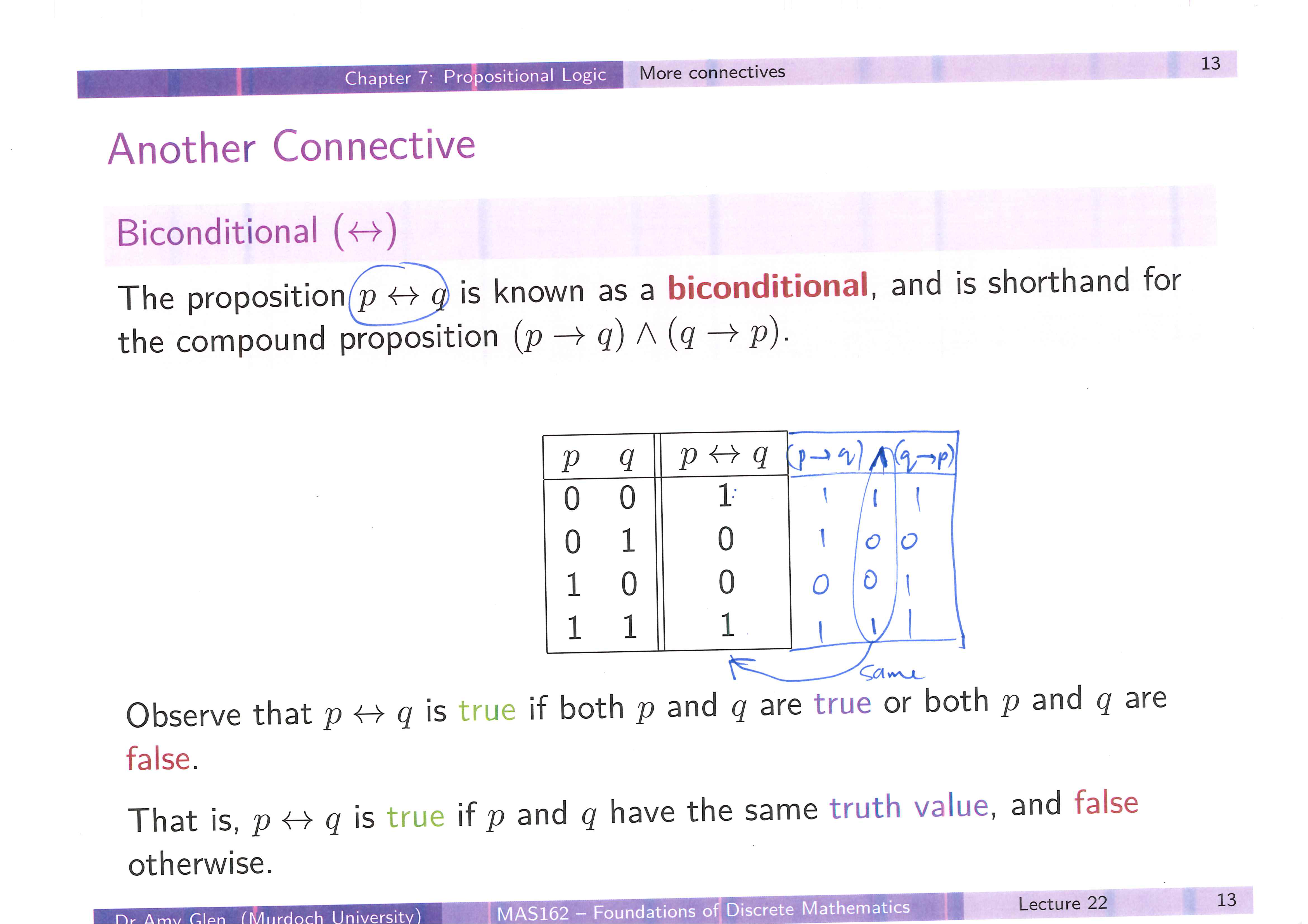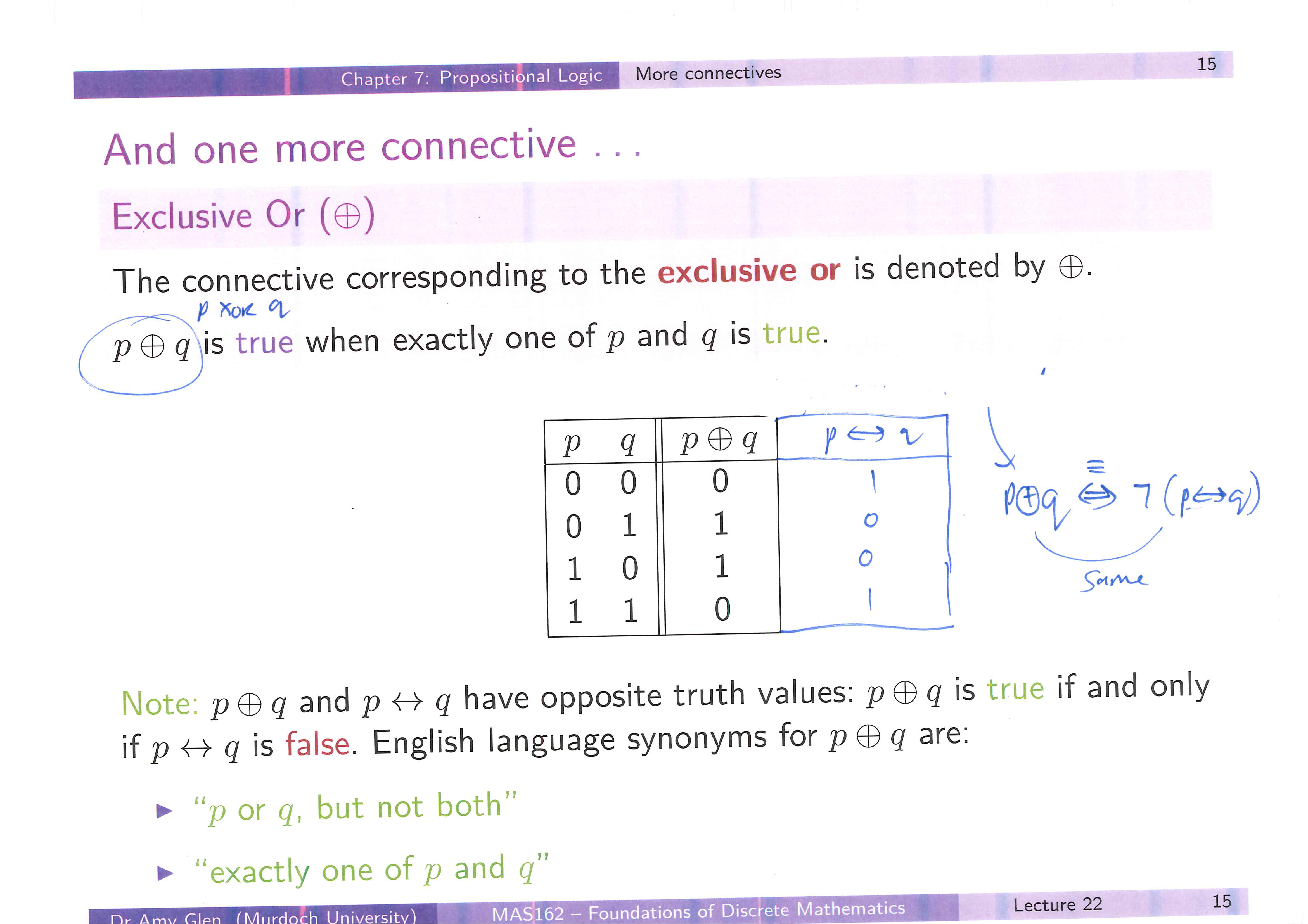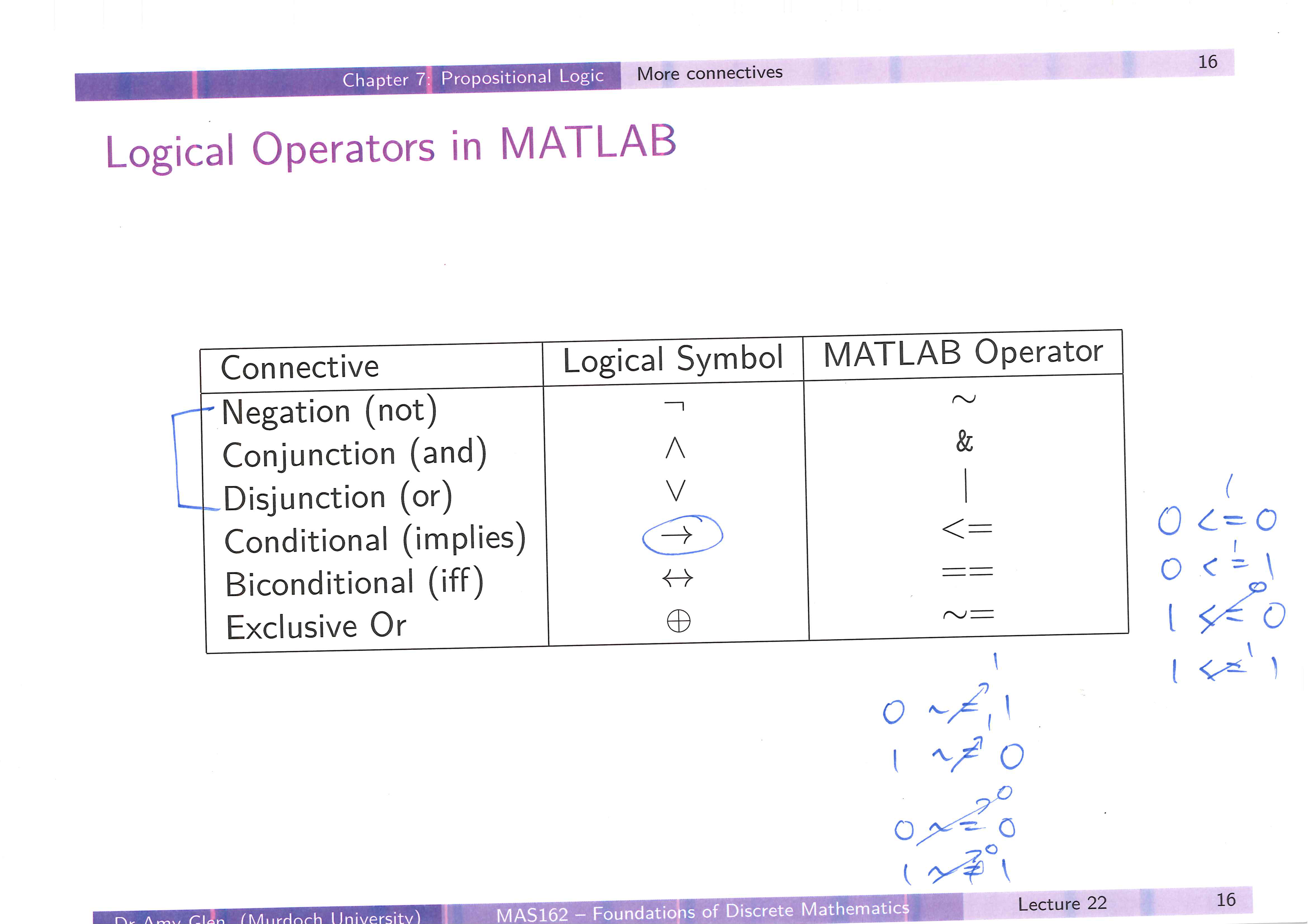A.Glen@murdoch.edu.au
https://amyglen.wordpress.com
(continued)
More Connectives
There are two other connectives for propositions which are important
for our study of logic, called the conditional and biconditional
connectives.
Consider the conditional proposition:
“If I win the lottery, then I will give everybody a gift.”
Example
| Dr Amy Glen (Murdoch University) |
MAS162 – Foundations of Discrete Mathematics |
Lecture 22 |
7 |
I That is, it is su�cient to prove that if p is true, then
q is true.
I Such a proof is called a direct proof.
The truth of the conditional, p æ q, could be established
directly by arguing as follows.
|
Four Related Conditionals
Note: p æ q and q æ p are not the same.
Four Related Conditionals . . .
You should notice that the truth tables of:
I p æ q and its contrapositive ¬q æ ¬p are the
same,
I the converse q æ p and the inverse ¬p æ ¬q are the
same.
Then



So a compound proposition is a tautology if the final column of its
truth table consists entirely of 1’s.
Tautologies are very important for our understanding and use of
logical reasoning.
Tautologies and Contradictions . . .
Definition
Example
The proposition (p æ q) ¡ p · ¬q is a
contradiction.
Example: Recall that p æ q and its contrapositive ¬q
æ ¬p have the same truth tables (i.e., the final column is
[1, 1, 0, 1]T), so they are
logically
|



